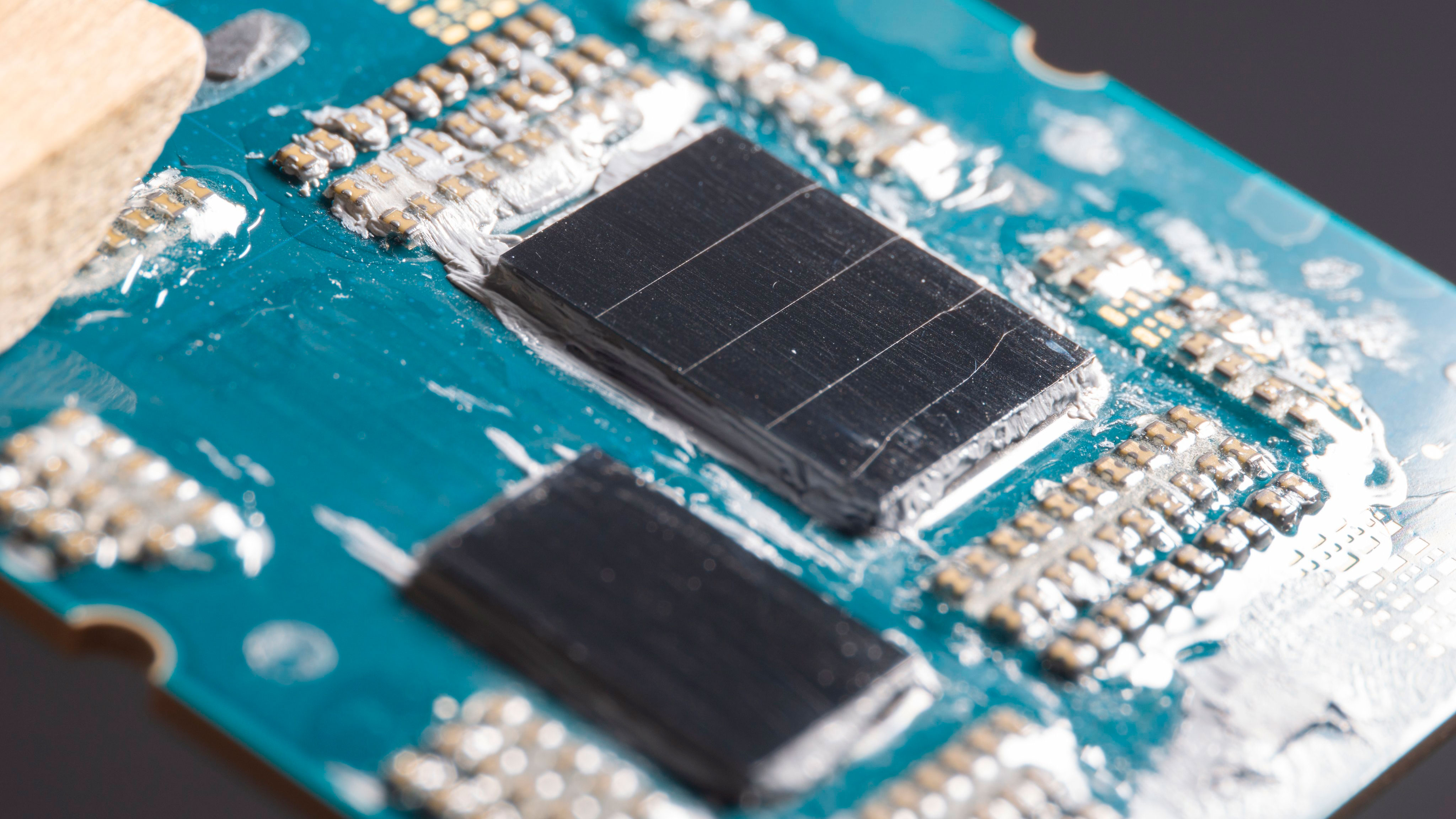
Fritzchens Fritz, famous for his IR photography of processors, recently shared an image comparing the Ryzen 5 7600 to the Ryzen 7 7800X3D. The renowned photographer described an unfortunate event with his Ryzen 5 7600. The hexa-core chip's I/O Die had cracked unexpectedly during some tests before taking thermal images of the processor. However, it's important to note that Fritz's experience doesn't indicate any issue with the Ryzen 7000 processors.
Fritz delidded the Ryzen 5 7600 and ran it with Thermal Grizzly's Ryzen 7000 Direct Die Frame without a heatsink. He noted that the I/O Die (IOD) temperature was approximately 80 degrees Celsius, while the single Core Complex Die (CCD) thermally throttled to 95 degrees Celsius. He was using thermal imaging to capture the bouncing of the cores. The Ryzen 5 7600 was executing the Cinebench single-core test and produced image artifacts, and eventually crashed the system after 60 seconds.
The IR photographer had put the CPU cooler back on the Ryzen 5 7600 about two to three seconds after the system crashed, but it was too late. The IOD had cracked into five miniature pieces. Fritz shared his configuration with his Ryzen 5 7600, and all the voltage settings were in line. Therefore, the chip didn't burn out because of excessive SoC voltage, like what had been happening to Ryzen owners who were using AMD EXPO memory kits.
Direct die cooling has become mainstream over a few generations of processors. Directly cooling the die bypasses the need for an integrated heat spreader (IHS), improving temperatures and overclocking headroom. However, some risks are involved logically, such as too much mounting pressure that can easily crack the delicate chiplets inside Ryzen 7000 processors. That wasn't the cause in Fritz's case, though, since there wasn't any pressure on top of the Ryzen 5 7600 chip. While the Ryzen 5 7600 didn't survive the experiment, his Asus Prime X670-P motherboard, which used the latest firmware, was operational. The socket was fine, and there weren't any physical signs of damage on the rear of the processor.
Accidents such as this one are one of the hazards of Fritz's work. The Berlin-based photographer has delighted us over the years with high-quality die shots of Intel and AMD processors and everything else in between. So it's a shame that the Ryzen 5 7600 has suffered premature death. But rest assured, it won't be in vain, as many die shots will come out of the chip.







